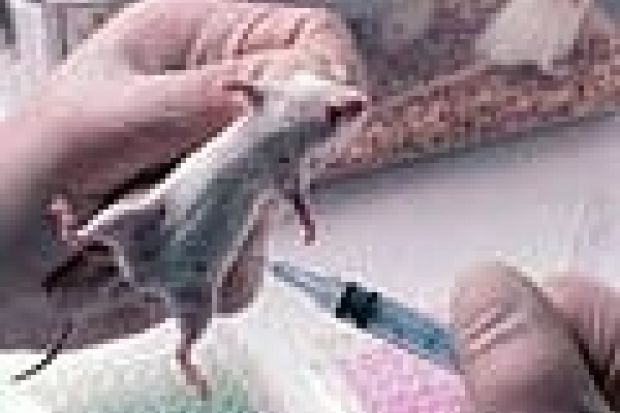European Commission proposals to screen all artificial chemicals in the environment will involve tests on more than 10 million lab rats, fish and other animals, according to a new study.
Scientists at Leicester University have concluded that even the use of some in vitro tests would lower the number of animal procedures by only a fraction unless the programme's ten-year format is revised.
The commission has proposed testing about 30,000 "old" chemicals in products from paints to perfumes to try to root out any previously unnoticed threats to human health or wildlife.
Chemicals introduced into the European Union after 1981 are already subject to a battery of safety tests, both in vitro and in vivo .
According to the study, carried out for the Department for the Environment, Food and Rural Affairs, non-animal techniques are unlikely to provide reliable analysis of acute and chronic toxicity (the procedures that require the most animal testing), carcinogenicity or chemicals' capacity to cause reproductive problems.
Despite years of research into alternative techniques, new tests would save only about 11 animals per chemical compared with current tests. Another 80 animals per chemical would be spared if some procedures were abandoned.
This could reduce fatalities by 1.8 million. But scientists said the programme would still probably require the use of 11 million animals - and perhaps considerably more if the offspring from reproductive studies were taken into account.
The team at the Medical Research Council's Institute for Environment and Health at Leicester University revealed the findings earlier this month to members of the United Kingdom chemicals stakeholder forum, a government advisory group. The government is still discussing its chemical policy with EU partners.
Paul Harrison, acting director of the IEH, said the findings presented a dilemma to the European Commission and campaigning groups.
"The use of validated alternative tests can reduce the numbers to some extent but will not have a great impact," he said. "If people don't like the idea of animal testing then there needs to be a different policy on chemical safety."
However, Michael Warhurst, safer chemicals campaigner for Friends of the Earth, said the IEH study was too pessimistic.
He said the commission's suggestion that long-established chemicals produced in quantities of less than 10 tonnes a year not be tested on animals would reduce the numbers. Furthermore, he said some groups of similar chemicals could be tested as one, and predicted that many chemicals would be dropped from the market in the face of regulations.
"The IEH report is coming up with a number much higher than reality," he said.
But Philip Holmes, an IEH researcher, said that EU proposals to abandon in vivo tests for chemicals produced in quantities of less than 10 tonnes a year might not prove acceptable.
"Our concern is that if you drop the repeat and acute oral toxicity tests, you lose a lot of assurance over of the safety of the chemical," he said.
The exact amount of testing a particular chemical is subjected to would depend on the amount produced annually. There is useful data on perhaps a quarter of them.
The IEH scientists surveyed scientific databases for research into in vitro testing and contacted a host of organisations working on alternative tests.
They concluded that there were in vitro tests that could be used to detect overtly toxic chemicals and that eye and skin irritation procedures that used material recovered from slaughterhouses would be adopted soon.
In a previous report, the IEH questioned whether Europe had enough testing infrastructure to handle the amount of procedures envisaged and whether the European Commission had grossly underestimated the cost and duration of the programme.
The House of Lords European Union committee has called for the government to reject the proposals and champion a better-prioritised testing programme with time for new methods to be developed. Lord Crickhowell, who chaired the Lords' inquiry, said the commission had taken on more than it could handle.
"Regrettably the commission has glossed over the fact that a huge number of animal tests would be needed to carry out its proposals within the time scale suggested," he said.
Much of the work would be carried out in the UK, where testing centres include Huntingdon Life Sciences, a recent target of animal-rights campaigners.
The European Centre for the Validation of Alternative Methods is expected to publish a report into the use of alternative testing for the commission's chemical-screening programme shortly.
Michelle Thew, chief executive of the British Union for the Abolition of Vivisection, called for more research into in vitro techniques.
She said: "This EU proposal constitutes the biggest mass animal poisoning programme in Europe's history."
Register to continue
Why register?
- Registration is free and only takes a moment
- Once registered, you can read 3 articles a month
- Sign up for our newsletter
Subscribe
Or subscribe for unlimited access to:
- Unlimited access to news, views, insights & reviews
- Digital editions
- Digital access to THE’s university and college rankings analysis
Already registered or a current subscriber?
